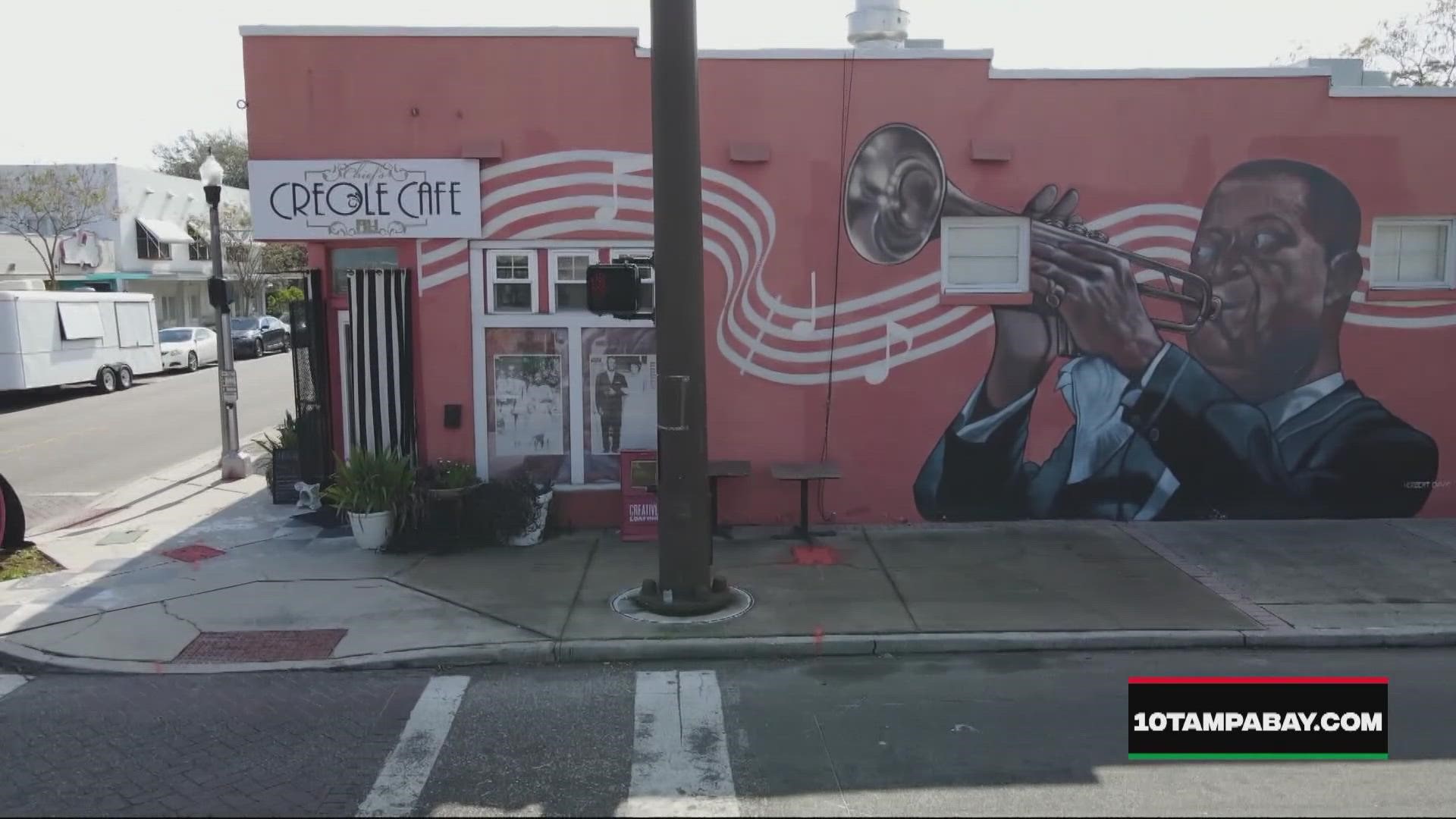TAMPA, Fla. — In a segregated Tampa and St. Petersburg where Jim Crow was king and excluded Black people from the world around them, they began to create a world of their own.
The historic Deuces neighborhood in south St. Pete is one prime example.
“During segregation, this was the home to more than 100 businesses,” said Veatrice Farrell, executive director of Deuces Live. “We joke that people could literally live and die on the street. [Mercy] hospital was on 14th Avenue and 22nd Street and on the corner of 9th Avenue and 22nd Street, there was the funeral home.”
There was also the historic Manhattan Casino, which was a stop on the old Chitlin’ Circuit.
"That's where African-American performers went because the music venues were segregated," Farrell said.
It attracted legends: Louis Armstrong, Duke Ellington, James Brown, Ray Charles and Nat King Cole, to name a few.
However, time brought about change.
"One of the things that destroyed the 22nd Street's vitality was the 1-275 interstate. And if we look at interstates throughout the United States, you'll find that probably 85% of historic African-American communities were destroyed,” Farrell said.
It's a story familiar to the nearby Gas Plant neighborhood, which was destroyed with the construction of Interstate 175 and Tropicana Field.
This theme continued in many historic Black neighborhoods across the bay in Tampa.
"Every one of these neighborhoods has a slightly different twist that led to their end,” said Rodney Kite-Powell, a historian at the Tampa Bay History Center.
In the 1920s, Dobyville was a thriving Black community in Hyde Park. The neighborhood got its name from businessman Richard Doby, who also owned land that became Zion Cemetery across town in what was once the Robles Pond neighborhood of Tampa.
Many of the neighbors who lived in Dobyville served as domestic workers for white homeowners in Hyde Park. Still, neighbors made the area their own with a school, church and other institutions that created lasting legacies for the community.
Like the Gas Plant and Deuces neighborhoods, it would also suffer from interstate construction.
"The construction of what is now the Lee Roy Selmon Expressway definitely damaged it. But that's really more of a story of gentrification,” Kite-Powell said.
Further into Tampa near Amalie Arena was once the Garrison neighborhood of Tampa.
“When Fort Brooke was decommissioned by the Army, the War Department, the little town of Tampa, actually wanted to secure all this land, going all the way to the river as a park. But there was a guy named Edmund Carew, and he had connections in the federal government,” Kite-Powell said.
“And so instead it was opened up to homesteading. What Carew didn't realize is that there were a few black families who found out about that. So, they actually applied for homestead applications on the parts of the land that he didn't apply for.”
Established in the late 1800s, the Garrison neighborhood was one of the first black-owned communities in Tampa.
Today, few signs of it remain.
"You’ve got a place that was an industrial port, now is a billion-dollar development,” said Kite-Powell referring to Jeff Vinik’s massive Water Street development in the footprint of the old Garrison neighborhood. “So, you know, you can look at it and say that's the sign of a healthy city. But...how do we make sure that everybody gets an opportunity to take advantage of the growth and success of the city?"
It’s a question neighbors of the Scrub and Central Avenue communities have asked for years. Once located near downtown and I-275, Central Avenue was a hub of culture and connection through the 1960s. However, the interstate also played a role in wiping out this historic neighborhood near downtown Tampa.
"That interchange couldn't have gone anywhere, but it could have gone slightly some other place, but it didn't,” Kite-Powell said. “And that's, again, because of economics and the racial attitudes of the times."
They are times those who know and love these communities hope the Tampa Bay area never forgets.
“It's the American story told from…the blood of the enslaved,” Farrell said.

